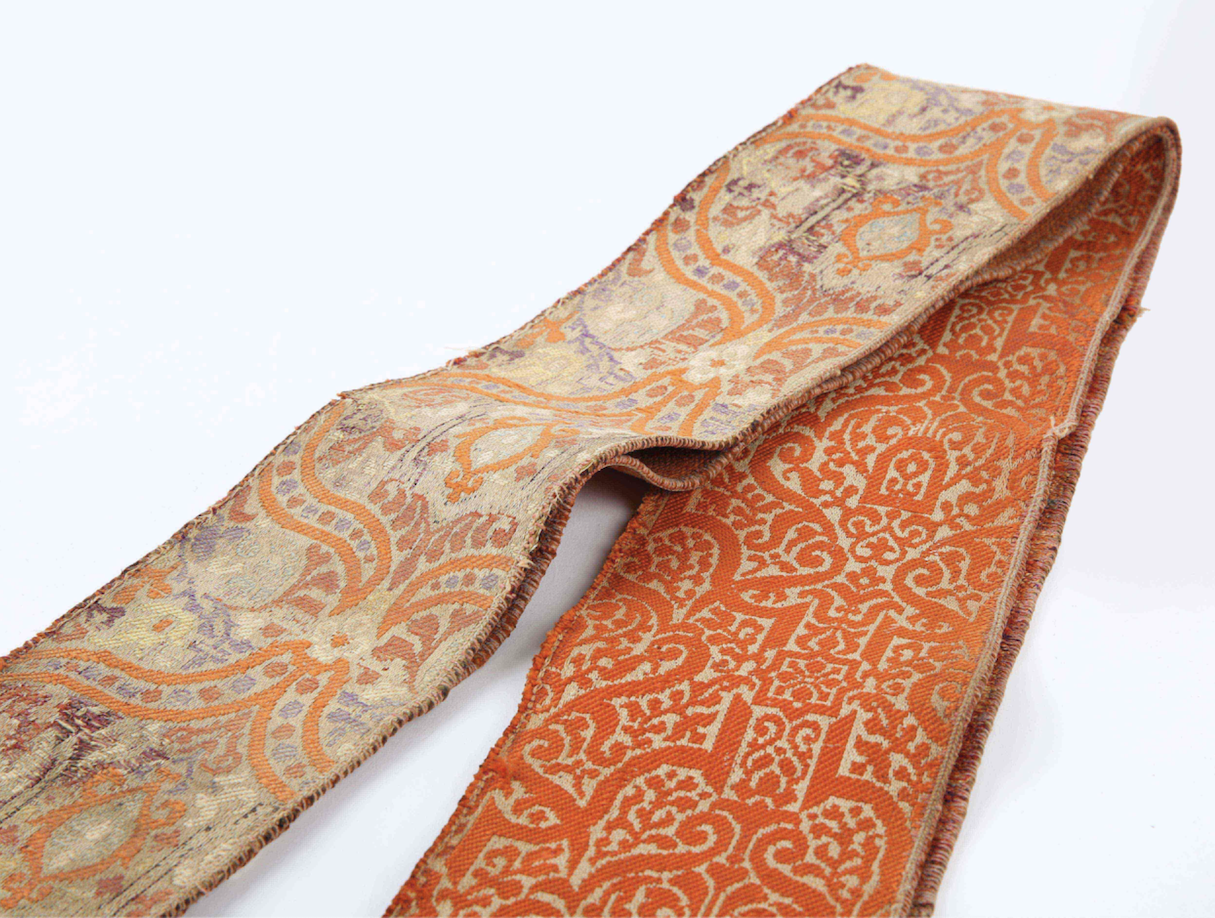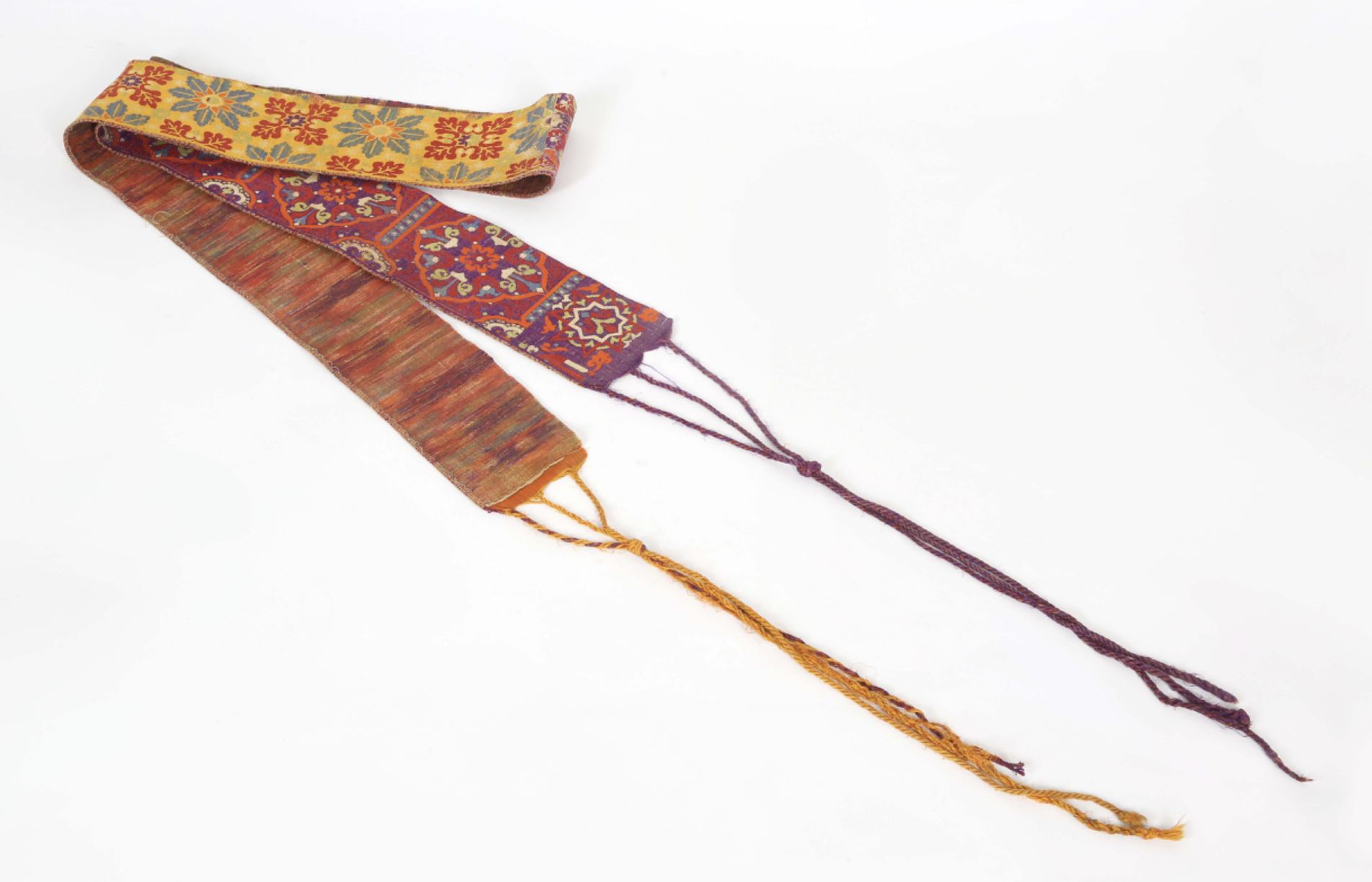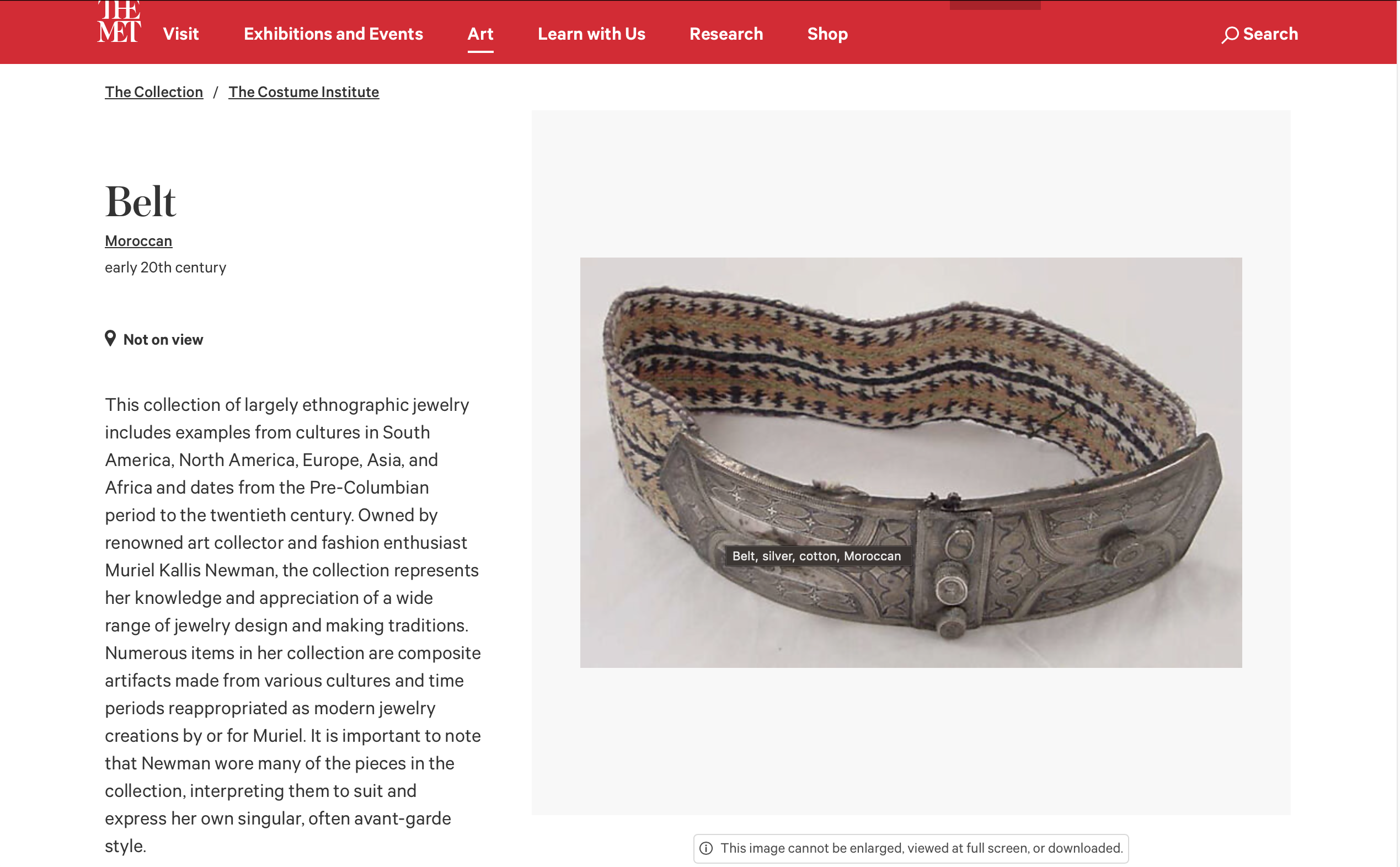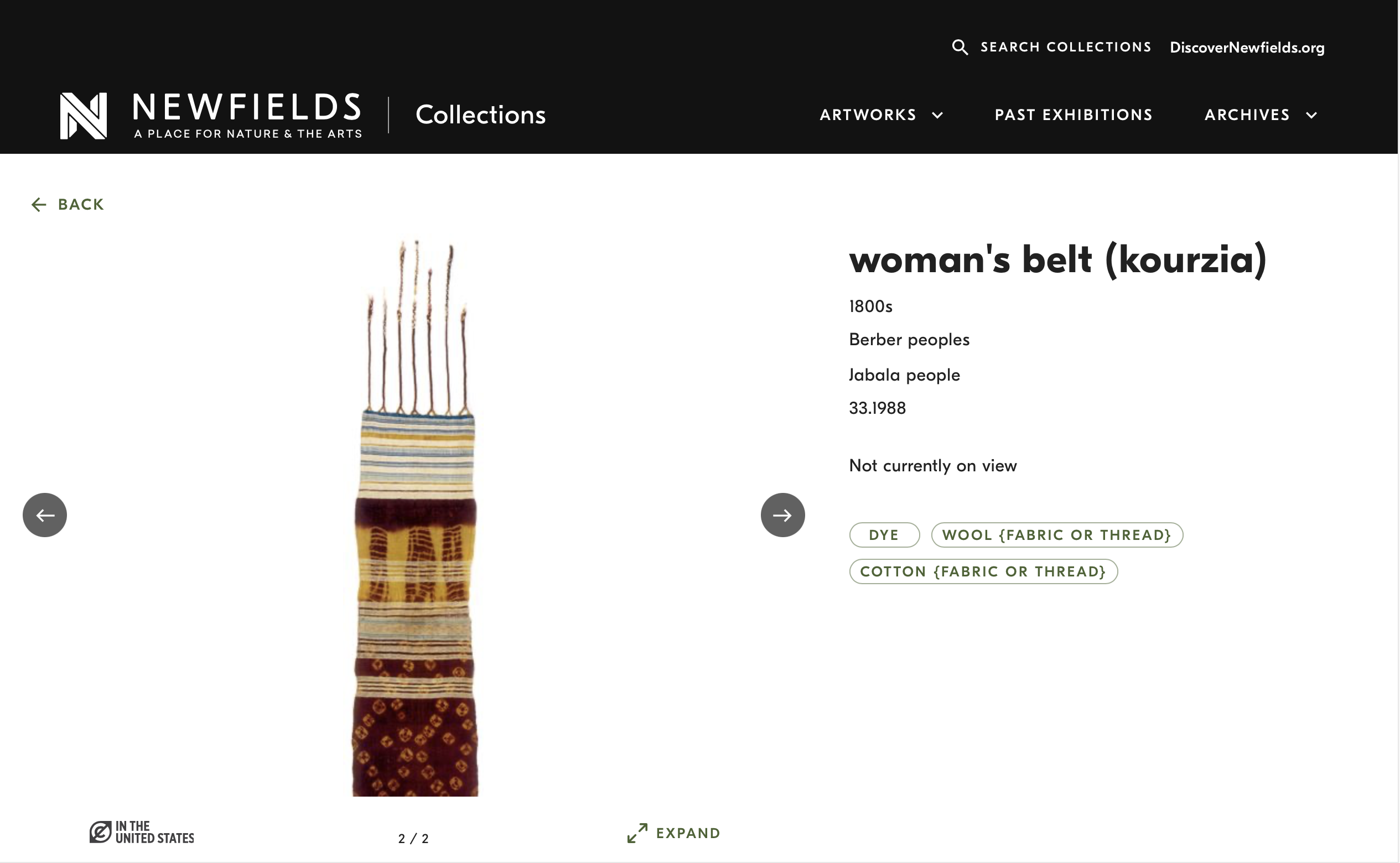As a continuation of the broader inquiry into the traditional urban attire of Moroccan men, this fifth instalment in the series turns its attention to two essential yet frequently overlooked components of male dress: waistbands and footwear. Following the preceding discussion on headwear, scarves, and draped mantles – which examined the ways in which these items articulated social status, regional identity, and generational affiliations – this segment expands the analytical scope to consider how the lower portion of the body was similarly encoded with cultural significance.
By examining the construction, use, and socio-cultural positioning of these elements, this article seeks to deepen our understanding of how appearance was managed, negotiated, and displayed in the public sphere, and how dress functioned as a dynamic medium of communication in Moroccan urban life.
Waistbands:
Waistbands and belts, whether simple woven sashes or elaborately adorned textiles, served not only functional roles in securing layered garments but also operated as visual indicators of the wearer’s economic standing, professional role, and, in certain contexts, ceremonial function. These accessories, often subject to specific norms of tying, folding, and placement, contributed to the broader visual coherence and symbolic richness of the ensemble.
Mdomma
The mdomma (مضممة) is a traditional waistband employed by Moroccan men to secure voluminous garments such as the qaftan and farajīyah, particularly during formal or ceremonial occasions. While used by both men and women, the masculine variants of the mdomma (مضممة) were characteristically more restrained in both design and ornamentation.
Screenshot of the page of The Met displaying a Moroccan belt, possibly a mdomma with silver buckle in their record; Title: Belt, Morocco, c. early 20th century; Source: The Met; Link
Typically constructed from leather, the men’s mdomma (مضممة) was wrapped around the waist and fastened with a metal buckle, providing both structural support and a measure of aesthetic refinement. Decorative elements, when present, were executed in silk or metallic threads—most often in monochrome or gold—and featured embroidery that, while skilfully rendered, remained comparatively understated in relation to the more elaborate motifs found on women’s mdomma (مضممة). This differentiation in ornamentation reflects broader gendered codes of visual display in Moroccan dress, wherein male attire often favoured subdued elegance over overt embellishment.
Hizām (Nemri and Squelli)
In several Moroccan urban centres, the traditional mdomma (مضممة) – the leather waistband used to secure garments such as the qaftan and farajīyah – was gradually supplanted by the hizām (حزام), a broader, high-waisted belt distinguished by its textile construction and tasselled ends. The hizām (حزام)can be broadly categorized into two primary types: the nemri, predominantly worn by men, and the more elaborately decorated squelli, typically associated with women’s dress. Although rare, instances of men donning the squelli variety have been documented, highlighting a degree of fluidity in stylistic adoption across gender lines. Nevertheless, given the predominance of the nemri among male wearers, the present discussion focuses on its formal and cultural attributes.
 A Moroccan Hizām; Title: Brocade waistband, Morocco, c. 19st century; Source: The Zay Initiative; Link
A Moroccan Hizām; Title: Brocade waistband, Morocco, c. 19st century; Source: The Zay Initiative; Link
The replacement of the mdomma (مضممة) by the hizām (حزام) was not an arbitrary development confined to isolated towns; rather, it marked a significant and widespread shift in sumptuary practices that gained momentum in the early to mid 20thcentury. This transformation likely reflects broader socio-cultural and economic changes, as well as the evolving aesthetics of urban Moroccan masculinity.
The hizām (حزام), typically constructed from woven silk or silk brocade and often incorporating metallic threads – particularly silver – was fastened by wrapping it tightly around the waist and tucking it at designated points, allowing its decorative tassels to hang prominently in front. As with the mdomma(مضممة), the hizām (حزام) worn by men was generally more subdued in its ornamentation than its female counterpart, maintaining an emphasis on visual restraint and modest elegance.
 A Moroccan Hizām; Title: Brocade waistband, Morocco, c. 19st century; Source: The Zay Initiative; Link
A Moroccan Hizām; Title: Brocade waistband, Morocco, c. 19st century; Source: The Zay Initiative; Link
The emergence and dissemination of the hizām (حزام) were particularly visible in urban areas with significant Jewish populations, especially within mellahs (neighbourhoods or settlements) of major cities such as Fez. Jewish artisans were central to the production and trade of silk and metallic threads, and their technical expertise and commercial networks positioned them as key figures in the manufacture of these belts. The textile patterns and motifs found in hizām (حزام) produced across North Africa – spanning Morocco, Algeria, and Tunisia – exhibit striking affinities with the decorative traditions of the Balkan Peninsula and Central Asia.
These visual parallels suggest a shared aesthetic vocabulary, likely disseminated through diasporic Jewish communities whose artisanal practices bore traces of Byzantine and broader Mediterranean influences. The North African hizām (حزام), therefore, not only reflects regional dress practices but also serves as a textile artifact that indexes transregional exchanges, diasporic movements, and the enduring legacy of cross-cultural artistic traditions.
Kourziya
The kourziya is a distinctive waistband traditionally worn by seamen or sailors, functioning as an integral component of the kiswah al bekhrīyah – the so-called “sailor’s costume.” As discussed in the preceding installment of this series, the kiswah al bekhrīyah shares a notable formal and structural resemblance with the kiswah al mahsūr (discussed in part i), the layered ensemble commonly worn by urban merchants across Moroccan cities. However, the maritime variant distinguishes itself through specific sartorial adaptations suited to occupational identity and environmental demands.
Screenshot of the page of the Newfields Collection displaying a Moroccan kourziya of Amazigh (Berber) origin; Title: Woman’s Belt (Kourzia), Morocco, c. 1800s; Source: Newfields Collections; Link
Typically constructed from wool, cotton, or, on occasion, silk, the kourziya is characterized by its considerable width and robust weave. It not only serves a functional role in securing the ensemble but also contributes to the visual distinctiveness of the kiswah al bekhrīyah. Although from the above example it is clear that the kourziya was not limited to either urban Morocco or men, the indelible presence of the kourziya within this male occupational dress underscores the nuanced relationship between professional identity and regional variation in traditional Moroccan male attire, where practical utility, material selection, and visual symbolism intersected to produce coherent yet context-specific expressions of dress.
The nuanced distinctions among the various types of belts and waistbands within traditional Moroccan male attire reflect more than mere stylistic variation; they serve as tangible indicators of socio-economic status, occupational identity, and regional affiliation. These accessories functioned within a broader visual system that articulated hierarchical and cultural meanings through dress. Moreover, the historical transition from the mdomma (مضممة) – a structured, often leather waistband – to the more textile-based and ornamental hizām (حزام) illustrates a broader trajectory of aesthetic and functional evolution in Moroccan fashion. This shift not only signals changing material preferences and artisanal practices but also underscores the dynamic interplay between tradition and innovation within the continuum of male dress.
Notably, similar patterns of transition and evolving material preferences are also observable in the domain of traditional Moroccan footwear. These shifts, reflective of broader socio-cultural and economic developments, will be examined in greater detail in the following segment, which addresses the construction, typologies, and symbolic significance of men’s footwear within the context of urban Moroccan dress traditions.


